



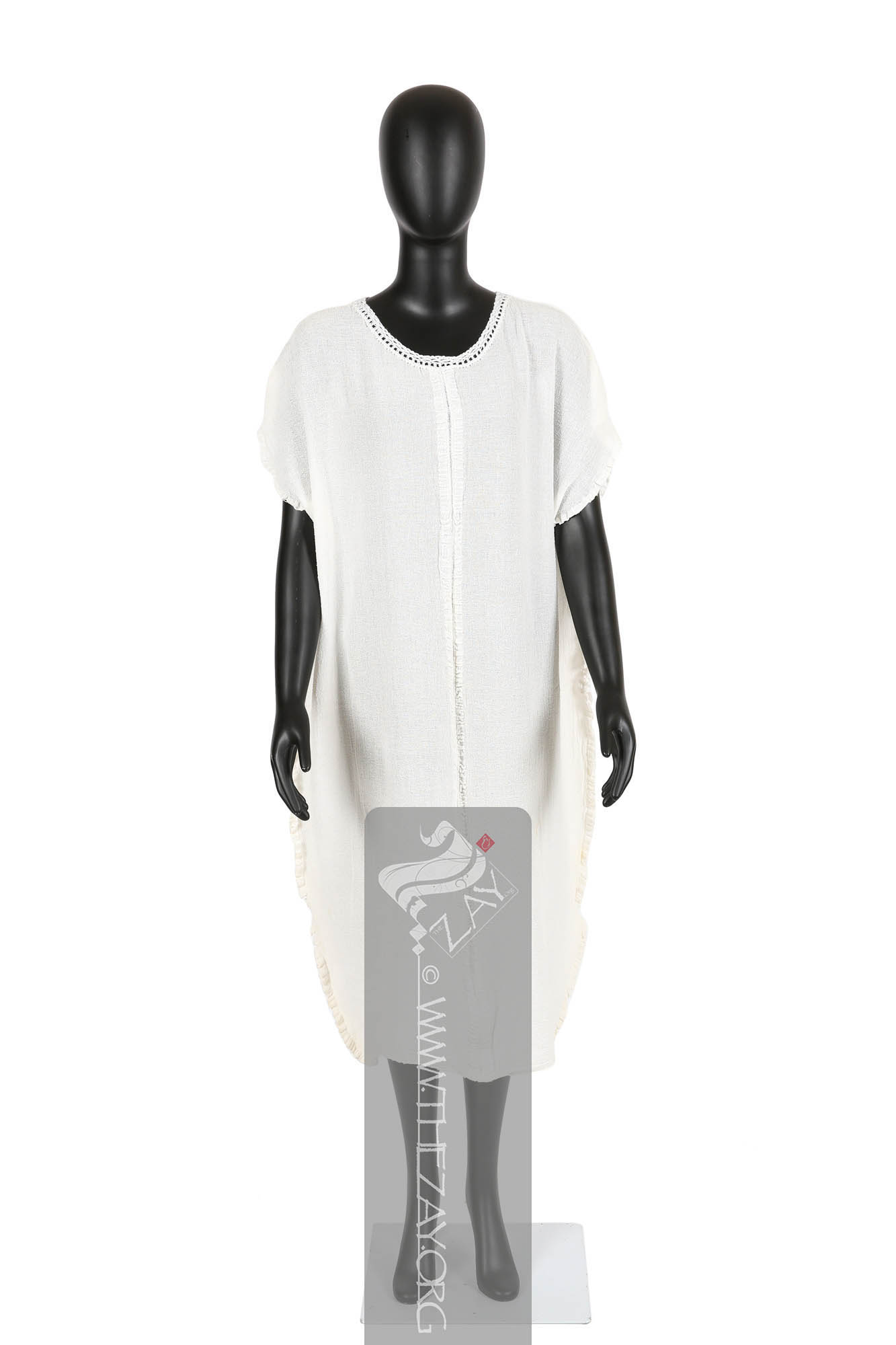

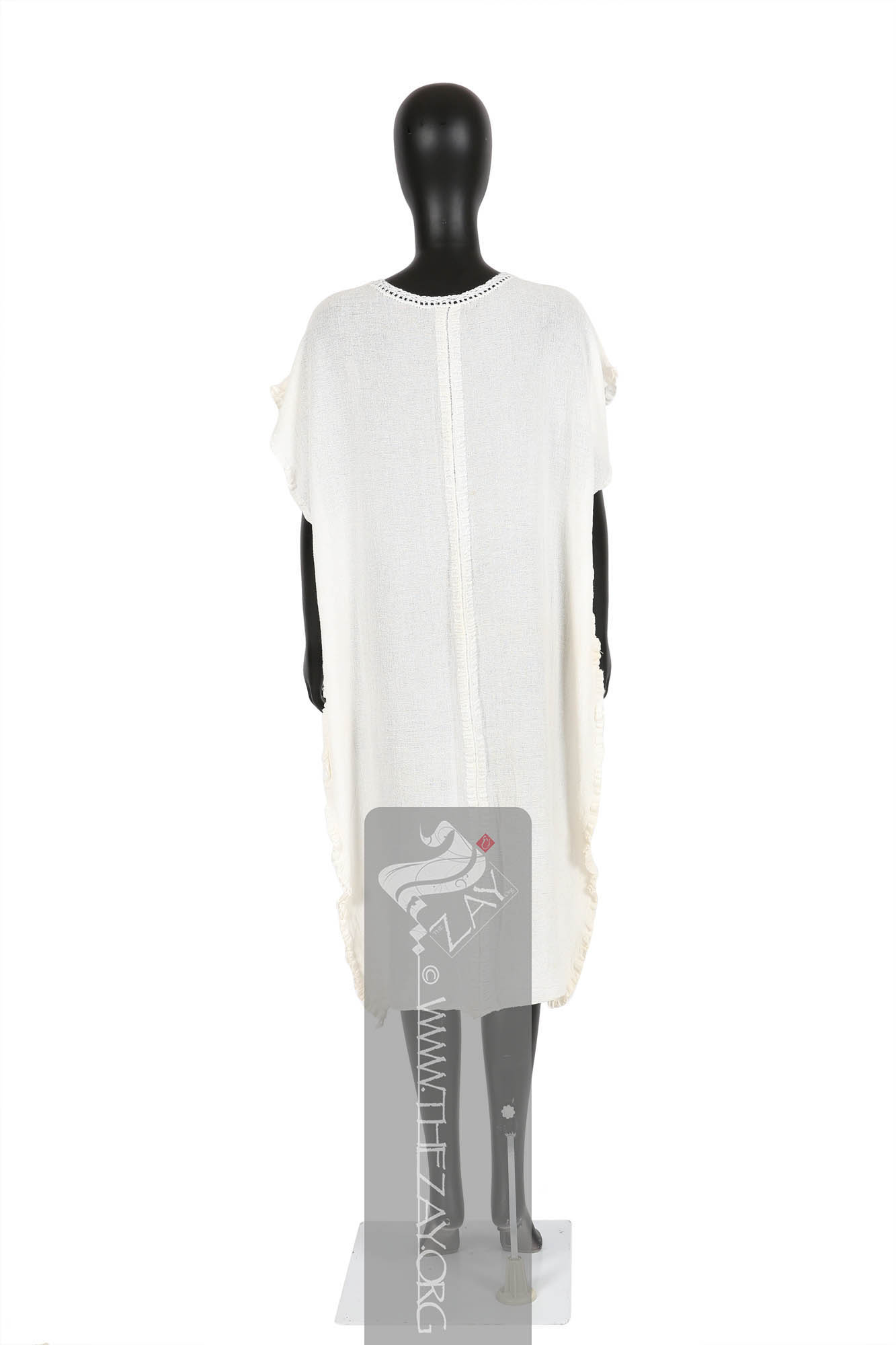
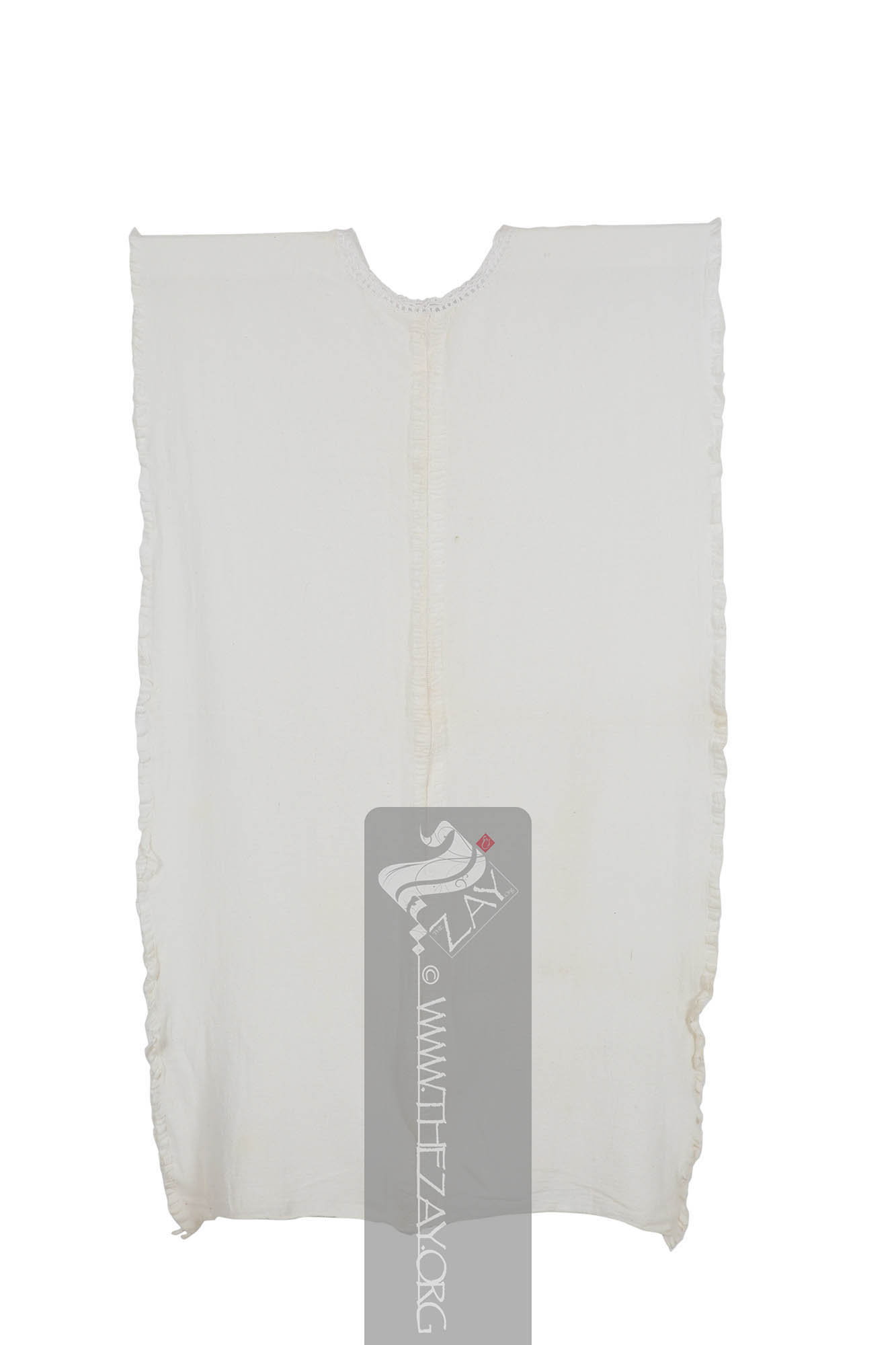

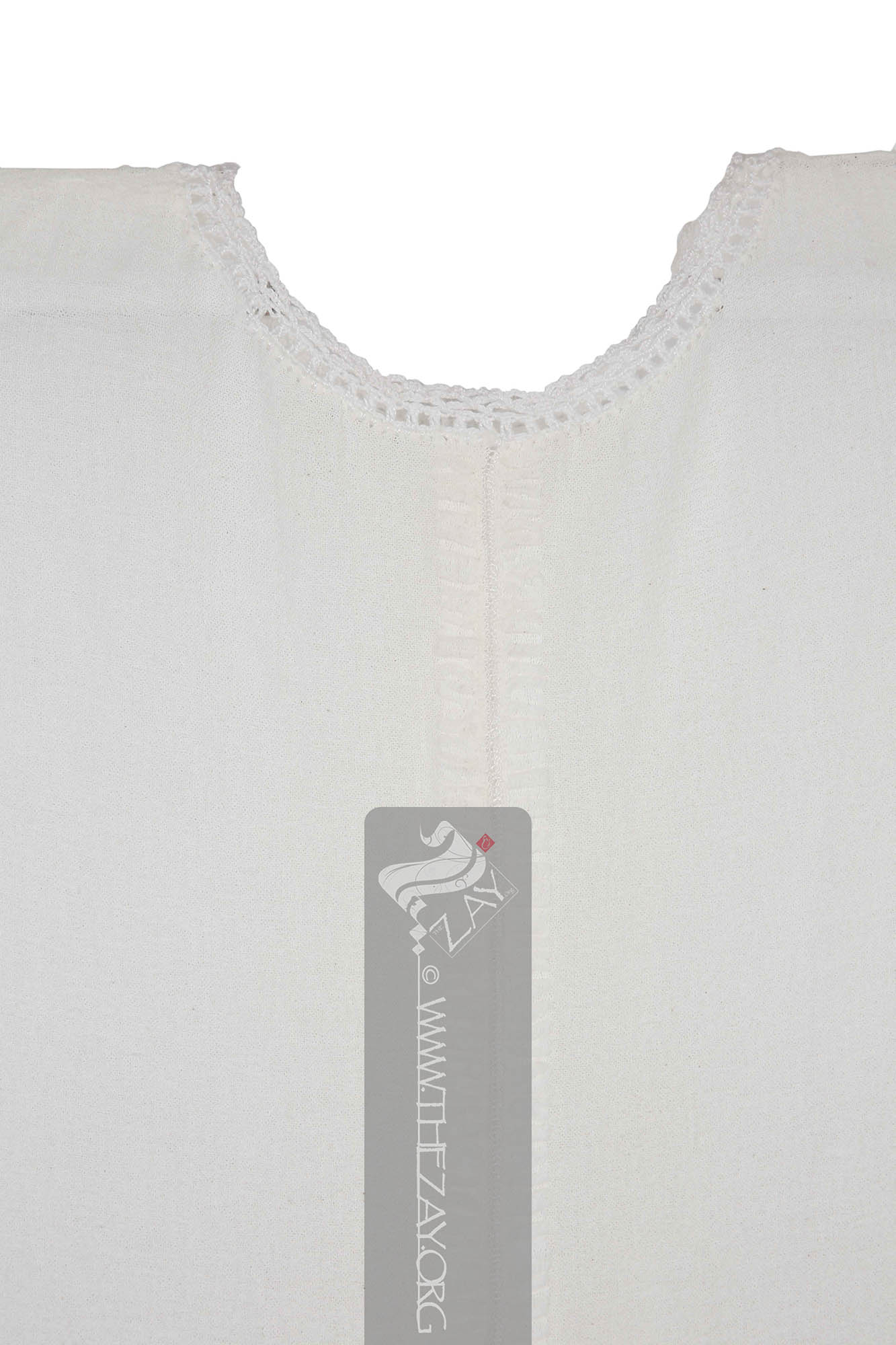
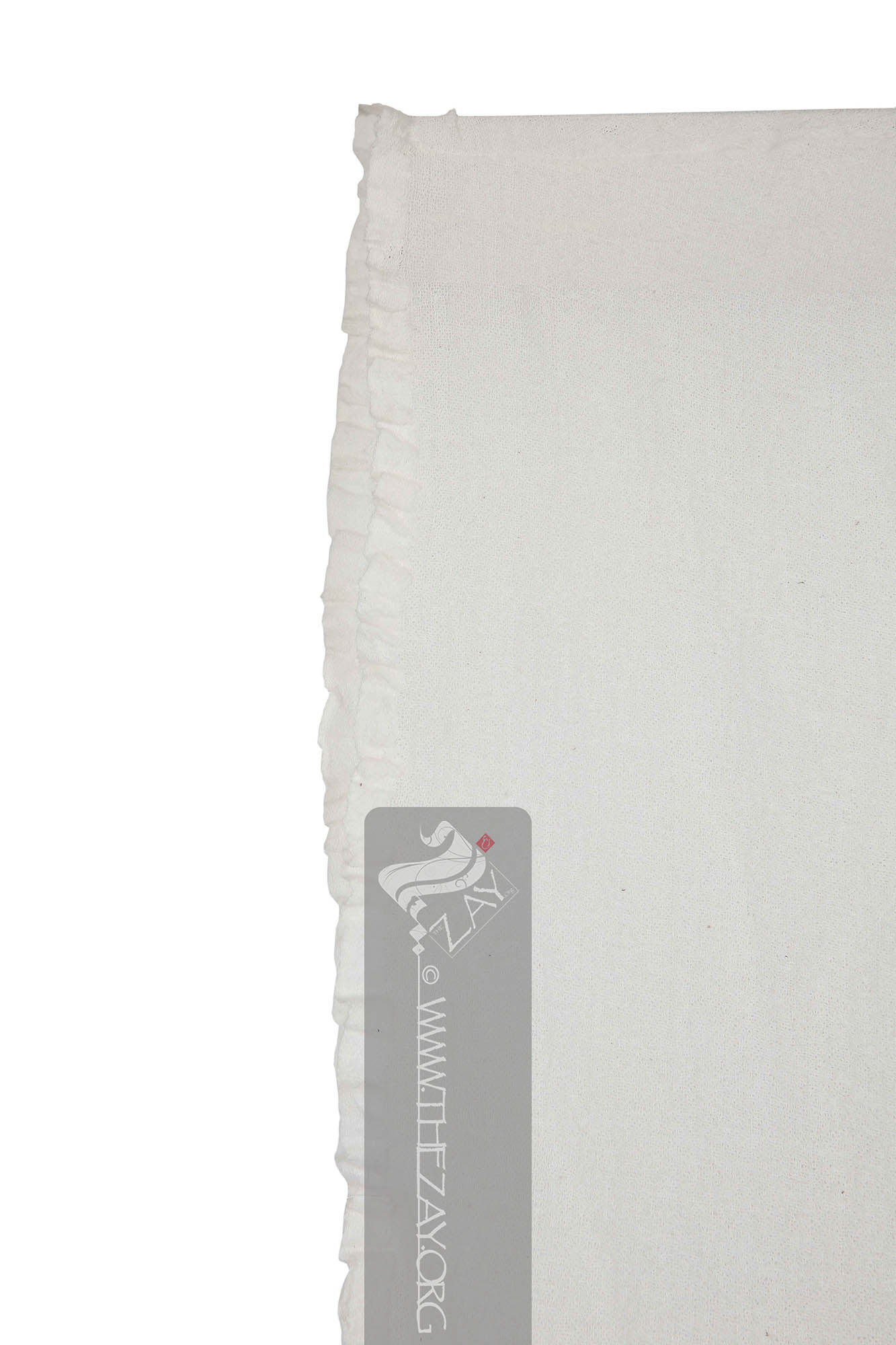
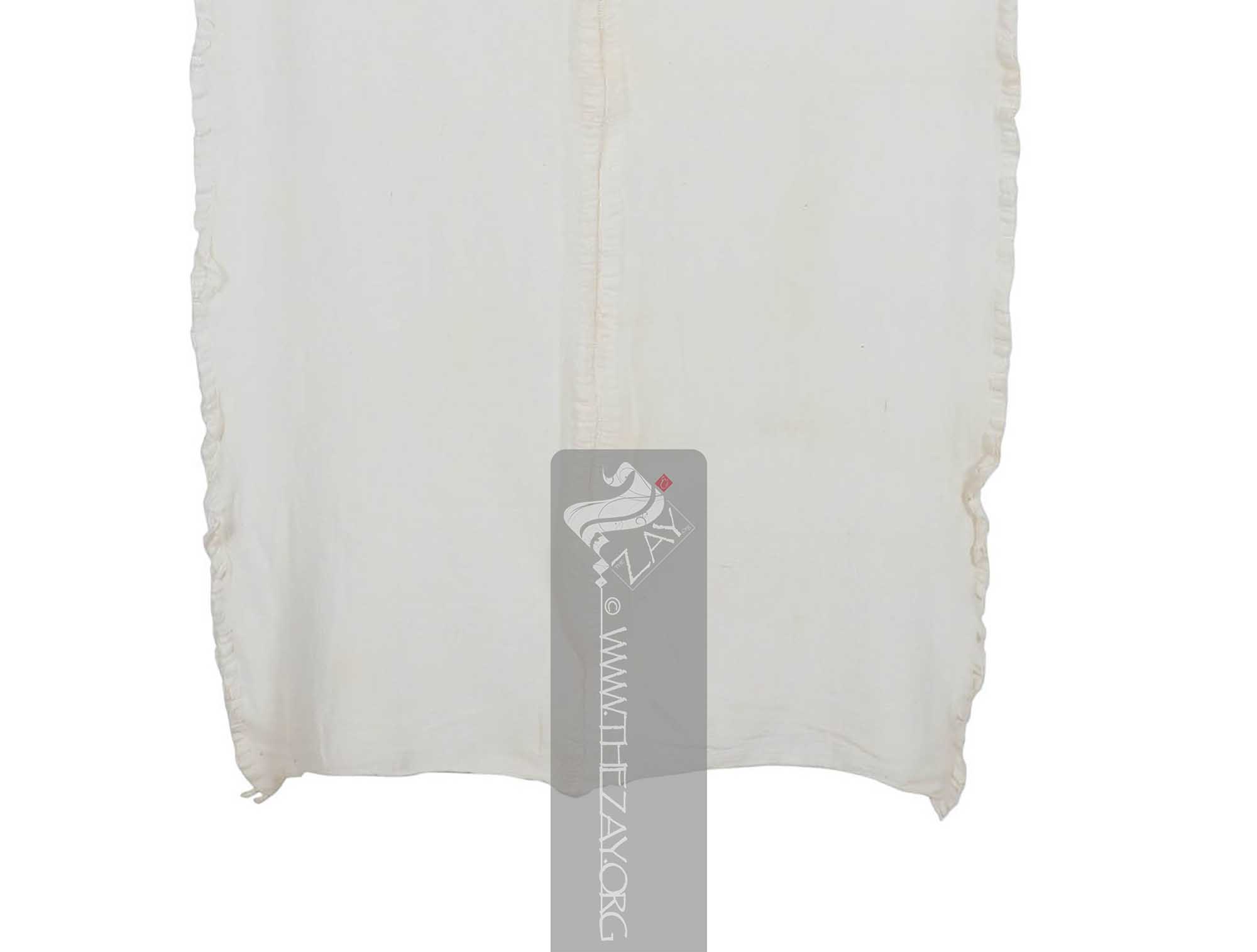
| Local Name | Gömlek; Atg |
| Object Category | Undergarment |
| Gender | Female |
| Date of object | c. 20th century |
| Place Of orgin | Iraq |
| Region | Iraq |
| Object Range | Türkiye, Syria, Iraq, Lebanon, Kuwait, Palestine, Jordan, Saudi Arabia, Egypt, Sudan, Cyprus, Bulgaria, Romania, Moldova, Greece, North Macedonia, Croatia, Serbia, Bosnia Herzegovina, Kosovo, Armenia, Azerbaijan, Georgia, et al. |
| Dimensions | - |
| Materials | Cotton |
| Technique | Hand Stitched Hand Embroidered |
| Color | |
| Provenance | - |
| Location | The Zay Zay: (Arabic: costume, Pl. azyaā’), a set of clothes in a style typical of a particular country or historical period. Initiative |
| Status | In Storage |
| ZI number | ZI1995.500332 IRAQ |
Object Features
This is a women’s calf-length Ottoman-style tunic undershirt or chemise (gömlek
Gömlek: (Proto-Turkic: köyŋelek – Shirt; Azerbaijani: köynək – Shirt; Turkmen: koynek – long loose tunic dress), a traditional calf-length sleeved undershirt or tunic generally made of a plain white cotton, silk, or linen fabric, some more lightweight than others, worn by both Ottoman men and women of all communities throughout the empire. ) made of thin ivory crushed cotton (gauze
Gauze: (English), very fine wire mesh transparent fabric of silk, linen, or cotton.). The gömlek
Gömlek: (Proto-Turkic: köyŋelek – Shirt; Azerbaijani: köynək – Shirt; Turkmen: koynek – long loose tunic dress), a traditional calf-length sleeved undershirt or tunic generally made of a plain white cotton, silk, or linen fabric, some more lightweight than others, worn by both Ottoman men and women of all communities throughout the empire. has a closed round neck adorned with a thin (crochet
Crochet: (French: croc - hook), a handicraft technique that involves using a hooked needle to create interlocking loops of yarn or thread to make a variety of items such as garments, accessories, and home decor. ) needle lace trimming made of ivory silk floss
Floss: (Old French: flosche – nap of velvet), is a type of silk fibre obtained from the cocoons of wild silkworms. It is characterized by its long, fluffy fibers that are not tightly woven, making it ideal for use in various textile applications such as embroidery, lace-making, and sewing. thread. Two seamlines that run vertically along the back midriff and in front are gathered and crocheted into a thin panel needle lace with ivory silk floss
Floss: (Old French: flosche – nap of velvet), is a type of silk fibre obtained from the cocoons of wild silkworms. It is characterized by its long, fluffy fibers that are not tightly woven, making it ideal for use in various textile applications such as embroidery, lace-making, and sewing. threads possibly done using (drawn_threadwork
Drawn_threadwork: one of the original forms of open thread embroidery technique where either the weft or the warp threads are removed and then stitched back using needle point crochet. It is often used in creating beautiful patterns both functional and decorative.
Iraq, located south of Türkiye, was a significant Arab territory under the rule of the Ottoman Empire for approximately four centuries. In the northern province of Mosul, which was then under Ottoman rule, the prevalent modes of dress were heavily influenced by the fashion trends originating in Istanbul.
By the 1930s, Baghdad's elites and other urban Christian and Jewish communities had fully transitioned from Ottoman attire to European-style clothing. However, among the urban Muslim elites and middle classes, the shift towards Westernised clothing occurred more gradually, the vestiges of which are seen through pieces like these which are essentially from a decade or two later.
Links